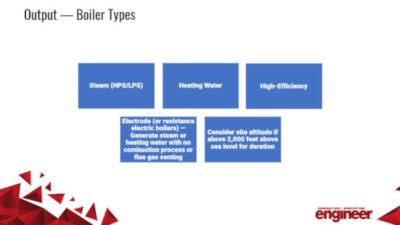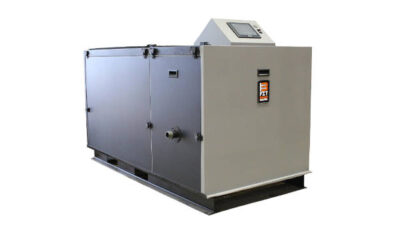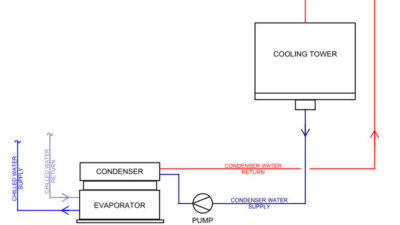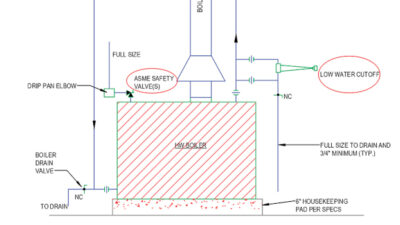While the mechanical engineering team has much more control over how HVAC systems are designed and how they fit into the facility for new construction, retrofitting HVAC systems to accommodate existing buildings is considerably more challenging.
While the mechanical engineering team has much more control over how HVAC systems are designed and how they fit into the facility for new construction, retrofitting HVAC systems to accommodate existing buildings is considerably more challenging. Existing buildings were built to meet older codes and design requirements, which makes it difficult to meet current codes and standards that affect energy efficiency, indoor air quality, indoor environmental quality, and other factors. However, there is a huge opportunity to increase energy efficiency in older facilities.
Engineers must determine which HVAC system components should be included in a retrofit, how new equipment and supporting infrastructure will fit existing spaces, and how to bring systems in existing buildings up to local code. Designers also must tackle performance issues such as air balancing, upgrading HVAC controls and building automation, indoor air quality, and aligning lifecycle cost analysis (LCCA) with owner/client expectations. With regard to building envelope, resolving sources of leakage and indoor contamination in the envelope is considerably more challenging and expensive. Retrofit of existing buildings is challenged both by identifying envelope issues and developing creative solutions to resolving those issues cost effectively.
Learning objectives:
- The audience will understand the applicable codes and standards: ASHRAE 90.1: Energy Standard for Buildings Except Low-Rise Residential Buildings; ASHRAE 62.1: Ventilation for Acceptable Indoor Air Quality; Standard 189.1: Standard for the Design of High-Performance Green Buildings, and International Energy Conservation Code (IECC).
- Attendees will learn how to identify opportunities to increase energy efficiency through upgraded HVAC systems, building envelope, insulation, etc.
- Viewers will gain insights on how to calculate the owner’s return on investment (ROI) and complete a lifecycle cost analysis (LCCA) when retrofitting specific building types, such as office buildings, hospitals, schools, or mixed-use buildings.
- Viewers will develop a basic understanding of HVAC retrofit performance delivery issues, such as commissioning, building envelope testing, test-and-balance, and air balancing, and ensuring the new system works in the existing building space.
- Attendees will learn how to use effective building testing to establish the condition of existing building air and water distribution systems, existing building loads and specific building envelope opportunities.
Presenters:
Jerry Bauers, PE, National Program Executive, Outcome Construction Services LLC, Kansas City, Mo.
Ryan T. Evans, PE, LEED AP, Director of Sustainability, Strategic Partnerships, Henderson Engineers Inc., Lenexa, Kansas
Moderator: Jack Smith, Consulting-Specifying Engineer and CFE Media, LLC



